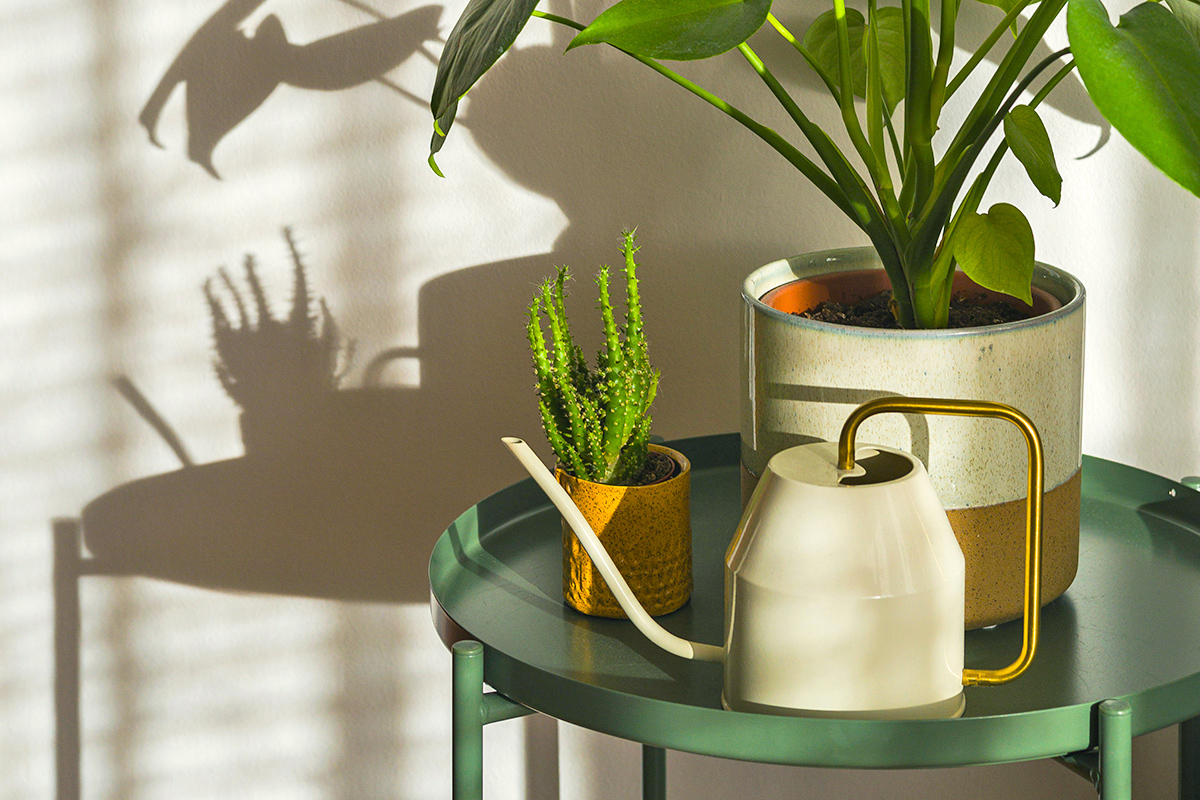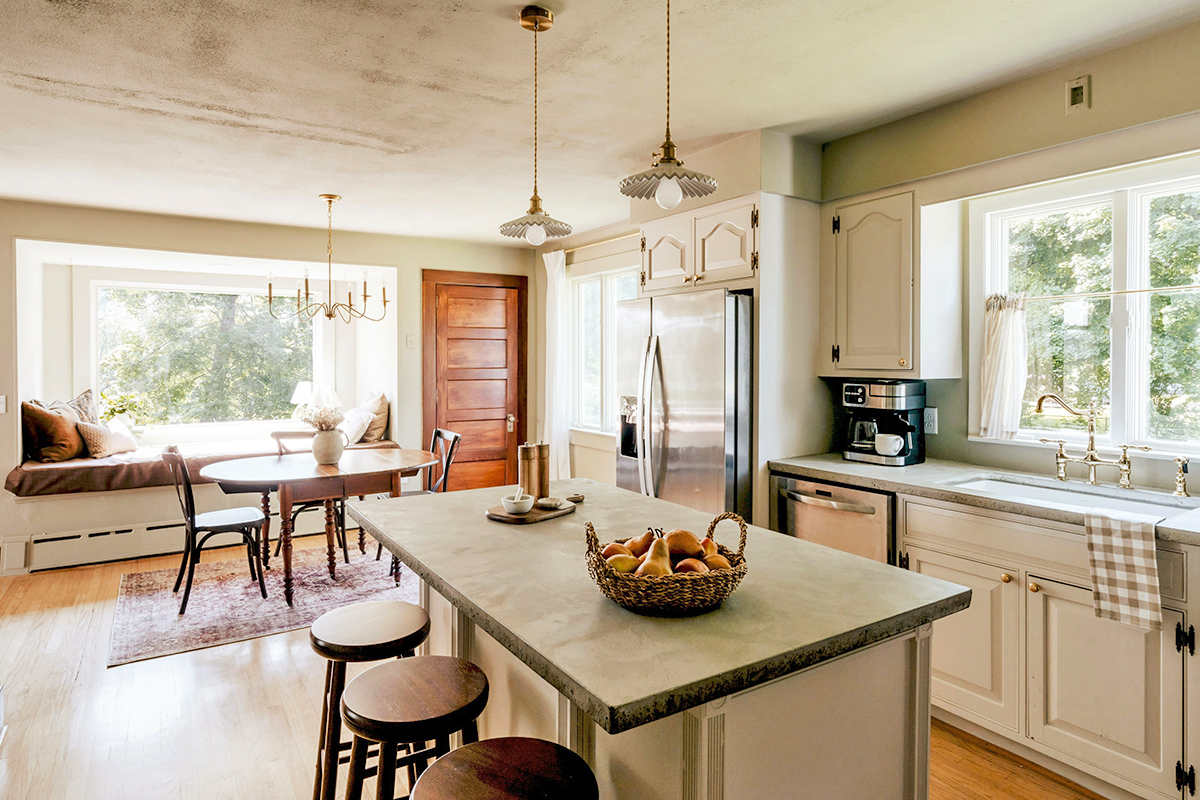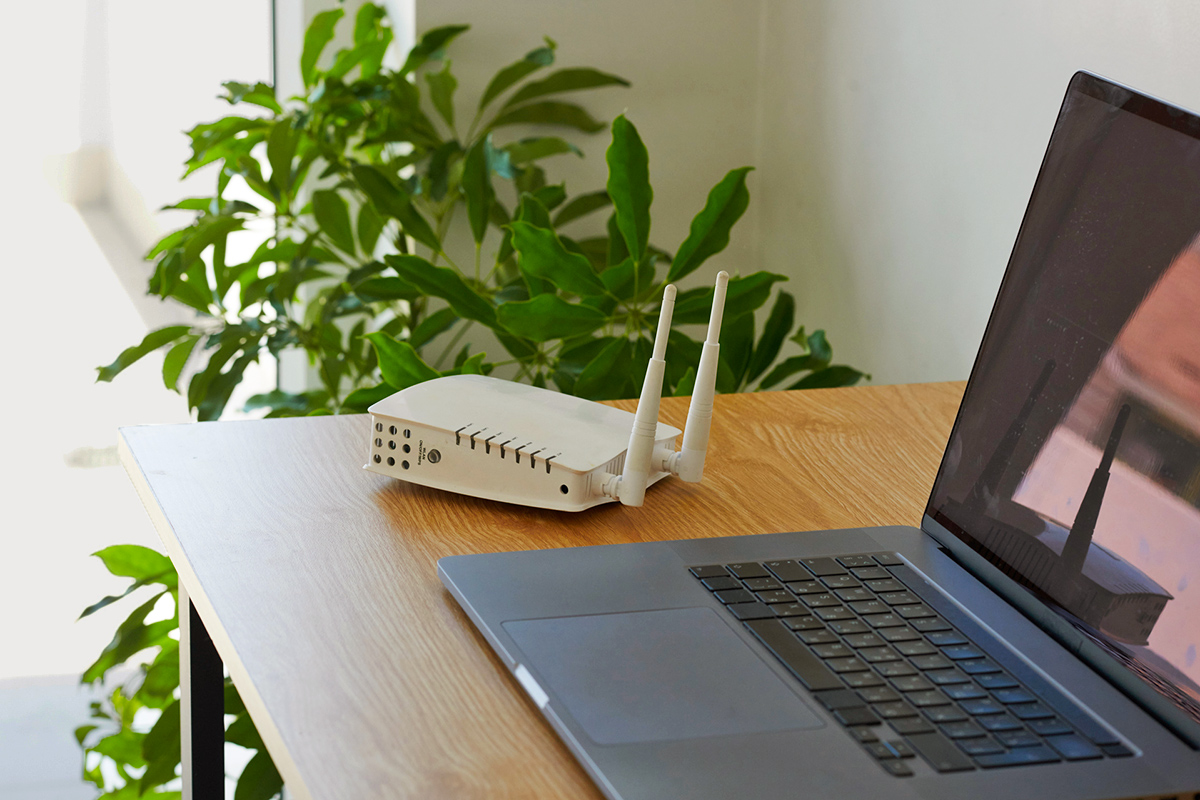Sometimes it feels like the odds are stacked against our houseplants. Even if you deliberately choose beginner-friendly plants and make sure they can survive in the low-light corners of your home, most of us still find a way to kill off our beloved green guests.
Occasionally, as with your favorite murder mystery, the culprit is the one thing you least expected. In this case, decorative pots are the villain. They’re pretty and can add to your decor, but they aren’t necessarily the best plant pots. After all, they’re designed for aesthetics over function. Here’s a quick way to make sure your love of design isn’t getting in the way of your love for houseplants.
The Two-Pot Method
From the plant’s perspective, decorative pots can have a few fundamental flaws. They may not have any drainage holes, for example, or the ones they have might not be large enough or well designed. Sometimes, depending on the style, they can come in odd shapes with lots of weird little nooks and crannies inside.
All of those things can erode your plants’ health or make them more difficult to manage as they grow. Poor drainage, for instance, is a leading cause of root rot (right up there with overwatering). And odd-shaped or novelty pots, especially with unglazed interiors, can make it ridiculously difficult to repot your plants. The plants and their soil stick stubbornly to the inside, and roots can even grow directly into the old pot. The solution? Use a pot within a pot.
More from our network
House Outlook is part of Inbox Studio, which publishes content that uplifts, informs, and inspires.
Keep the Plant in Its Nursery Pot
Most plants come from the garden center or nursery in an inexpensive nursery pot. These aren’t impressive as plant pots go, but they’re designed for the express purpose of keeping plants healthy. They provide excellent drainage (sometimes too good, causing you to lose soil, but there’s a hack to prevent that). The downside is that they’re not very attractive and they aren’t always durable enough for long-term use.
But if you keep the plant in its nursery pot and then place that inside your decorative pot, they fix the other’s shortcomings. The nursery pot gives your plant the drainage it needs and allows for easy repotting as it grows. The decorative pot, for its part, gives you an attractive and sturdy exterior. Just slide out the inner pot for watering, ideally by letting it sit in a pan of water instead of watering from above. Then, once it drains, return it to the decorative pot.



















